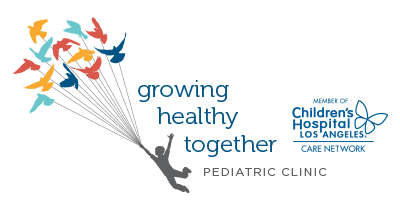What is Heavy Metal Exposure?
Heavy metal exposure is a rising concern as we learn about the metals that are commonly found in our food and environment. From lead in water to mercury in fish, it is hard to tell what items are safe to keep around ourselves and our families.
Fortunately, though heavy metal exposure is dangerous, it is somewhat uncommon.
Sources of Heavy Metal Exposure
Research shows that children absorb food better than adults do, so even small amounts of heavy metals can cause damage. In extreme cases, increased heavy metal exposure influences child development.
Furthermore, some foods, vitamins and supplements, certain medications, and work/play environments often contain heavy metals. Heavy metal can also find its way into food and drink from some containers and from the soil. Children can be exposed while playing in contaminated soil. Additionally, we can absorb heavy metals through our skin and by breathing certain air particles.
In a recent study of imported rice grains, researchers found that grains from 11 countries available in Kuwaiti markets contained high amounts of heavy metals. Imported rice contained arsenic, cadmium, lead, and mercury. The rice samples contained the highest geometric means, which means that heavy metal content was higher than average.
Preventing Exposure to Heavy Metals
Firstly, the most common heavy metals that people are exposed to are lead, arsenic, and mercury.
Lead exists in urban areas, soil, old water pipes, and some old paints. Lead contamination is common in homes built before 1978. If you live in an older home, check for peeling paint or damage on your walls. You may need someone to come inspect the paint and test for lead.
Furthermore, the CDC recommends that children be tested for lead exposure at the 1-year and 2-year visits. We can test for heavy metal poisoning with blood and urine testing, hair and tissue analysis, or x-rays.
Wood products and well water contain arsenic. And contaminated fish contain mercury. Avoid mercury exposure in fish by checking this Mercury Guide.
Symptoms of Heavy Metal Poisoning
- Nausea
- Vomiting
- Diarrhea
- Stomach pain
- Headache
- Sweating
- Metallic taste in the mouth
- Blue or black lines in gums
- Cognitive impairment and/or confusion
- Problems with language
- Motor impairment
How is Heavy Metal Exposure Treated?
- Eliminate certain items from diet and environment (contaminated water, some fish, lead paint, contaminated soil, etc.)
- Take selenium to increase mercury and arsenic excretion
- Take Vitamin C to reduce lead in the body
- Pregnant women can take folate to lower mercury and cadmium levels
- Eat lots of garlic to decrease lead levels
- Chelation therapy (rid the body of heavy metals by taking a medication that binds to heavy metals to be excreted out in the urine)
Finally, it’s important to remember that certain metals, like copper, zinc, and iron, are good for us in moderation. Be sure to get your daily recommendations of good metals!
Mad as a Hatter: Mercury Exposure & Its Effects
 Interestingly, the expression “mad as a hatter” is due to a centuries-old problem with mercury-dipped animal hides. Due to constant contact, hatters would absorb mercury through their skin and slowly lose cognitive function. Anyways, we’re all a little mad here! If you believe you are suffering from heavy metal toxicity due to heavy metal exposure, reach out to us today to see how we can help!
Interestingly, the expression “mad as a hatter” is due to a centuries-old problem with mercury-dipped animal hides. Due to constant contact, hatters would absorb mercury through their skin and slowly lose cognitive function. Anyways, we’re all a little mad here! If you believe you are suffering from heavy metal toxicity due to heavy metal exposure, reach out to us today to see how we can help!




